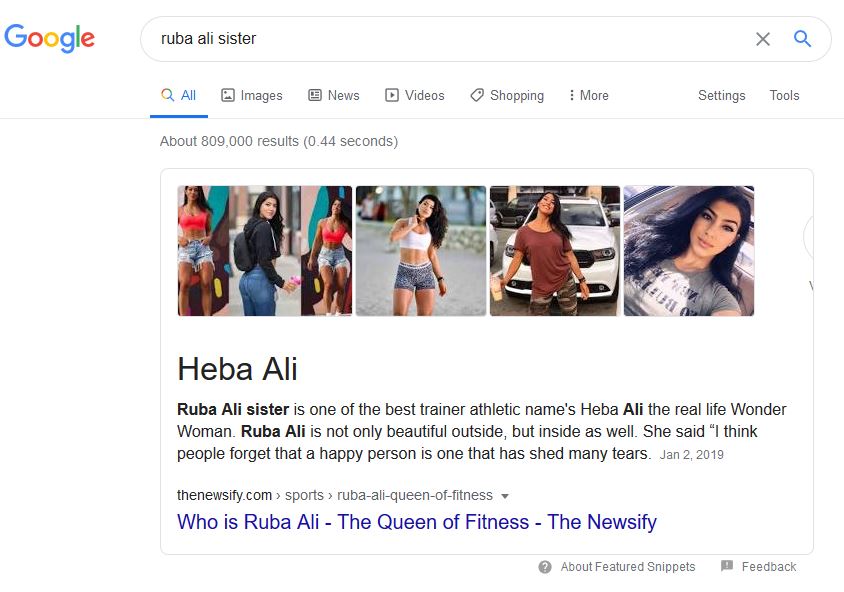In the ever-evolving world of SEO and digital marketing, securing a coveted spot at the top of search engine results pages (SERPs) has become more critical than ever. One way to achieve this is by aiming for “Position Zero” through featured snippets. Many search marketers do not prioritize Google-rich snippets as part of their content marketing strategies and focus on organic ranking instead.
But in reality, brands can attract visitors who are much more likely to convert if their featured snippet appears for their query. Furthermore, this can help increase overall ranking and online visibility. In this blog post, we’ll explore the significance of featured snippets, how they work, and strategies for optimizing your content to claim this valuable real estate on SERPs.
Understanding Featured Snippets

1. What Are Featured Snippets?
Featured Snippets are one of the most desired spots in Google search, taking up prime real estate in SERPs, giving your church an advantage against competitors, and driving traffic to your site. Furthermore, featured snippets often rank higher than other organic search results becoming featured could push up its ranking accordingly.
Acing featured snippets may be difficult, but there are steps you can take to increase the odds. Keyword research and understanding user intent behind queries you want to rank for are vital first steps toward successful content optimization for Google-rich snippets. After completing this step, examine the pages currently ranking at position zero for your target keywords and study their structures and markups. Ensure your content answers queries directly while including descriptive titles, headers, and internal links that support it.
While Google can never guarantee they will include your page as a featured snippet, there are ways you can increase your chances. Focusing on keywords with high search volumes and taking into account both word counts in queries and the length of content on web pages are likely to result in featured snippets being shown upfront. Next, focus on question-oriented keywords.
This could include searches that ask “how, what, when, where, and why.” Online tools such as Answer the Public can help you discover questions people are asking about your product or service – and then create content to answer those questions while optimizing accordingly. If your brand ranks highly for “how to” queries, creating a step-by-step guide could provide users with exactly the information they are searching for and bring more visitors to your website.
2. Types of Featured Snippets
Although many believe featured snippets are exclusive to SEO experts and brands with massive marketing budgets, that isn’t always the case. Google takes into account several factors when selecting relevant content for featured snippets including pages that answer queries in a direct and succinct fashion as one factor that influences its decision-making process. Therefore, it’s essential that you understand how to optimize content for featured snippets to meet the user intent of search queries.
In order to do this, it’s crucial that you become acquainted with different types of featured snippets, including paragraphs, lists, tables, and more, depending on the nature of the search query. The four most frequently appearing featured snippet formats are definitions, steps, tables, and videos. Definition featured snippets are perfect middle-of-the-funnel (MOFU) content that answers specific queries searchers have during their consideration phase – they typically appear for keyword terms with question-like phrases and are short and straightforward in nature.
Steps featured snippets provide answers in bulleted or numbered lists. They often appear for step-by-step queries like recipes or DIY instructions, while table-featured snippets are designed for data-driven inquiries, and table features are ideal for visualizing data sets. Finally, video-featured snippets offer results through short videos. Paragraphs comprise 7 out of every ten featured snippets (70%), with lists (3%) and tables (2%) trailing behind. With keyword filters, you can zero in on keywords that have featured snippets so that your efforts can be focused on these opportunities.
FAQs (Frequently Asked Questions) can also be an ideal opportunity to leverage featured snippets. By responding directly and precisely to questions using your targeted keywords, answering them with clarity can help search engines recognize that this content meets user demand and feature it accordingly. Other featured snippets include knowledge panels and knowledge cards from Google. These information boxes aggregate sources from across the web in order to quickly provide answers for specific searches for which Google compiles an information card that gives a simple response.
For instance, searching “How to do SEO for website growth?” generates a card that provides users with quick results. Google may sometimes display two featured snippets for specific searches. This occurs when they determine that their first pick does not satisfy user intent for their query and, therefore, displays another featured snippet that does match this need.
3. Benefits of Being Featured
Featured Snippets can help your site gain more real estate within Google’s SERPs, but getting one should only be seen as the cherry on top of your SEO efforts ranking well should always remain your main goal! Optimizing for featured snippets requires targeting certain keywords, analyzing competitors’ content, and using tools such as Ahrefs to see which queries your site ranks for that could earn it a spot within a featured snippet.
Visibility on Google search results pages (SERPs) can give businesses an invaluable marketing boost. Search engine snippets appear prominently above other results and often answer user inquiries directly, making them invaluable tools for SEO medical marketing. Earning a featured snippet can significantly increase your website’s visibility and click-through rates, establishing your authority in your niche.
Attaining a featured snippet requires providing accurate and succinct answers that meet user intent regarding their search queries. Your content should address how, what, when, where, why, or who questions. Ranking position can also impact the probability that you become a snippet. According to an Ahrefs study, results that appear at position one have the greatest chance of becoming snippets.
Optimizing for Featured Snippets

1. Targeting Snippet-Worthy Content
As soon as featured snippets first emerged, they caused quite a stir among SEO professionals. People were concerned that Google was taking away clicks from top-ranked pages yet most searches still send more clicks toward organic results than to featured snippets. Focusing on keywords with featured snippets and optimizing content around them are the keys to successful SEO. To do so, start with using third-party tools to identify which have featured snippets, followed by prioritizing efforts based on that data.
Once your page has met the minimum SEO requirements (short URL paths, HTTPS connections, relevant markup schema, sufficient content length, keyword density, an easy-to-read header-based structure, etc.), make sure it also satisfies question/answer queries related to what your users are targeting; this step can help generate leads with long tail queries. Lastly, add questions and answers relevant to what your audience is searching for especially important when targeting queries with question-like or long-tail intent.
2. Structured Content
Acquiring featured snippets requires satisfying search intent. In order to reach position zero for your keywords, ensure your content provides a comprehensive answer that’s easily digestible. Start by identifying your top competitors for each keyword on your target list, then study their snippets and content structures to understand where improvements can be made. As an example, many featured snippets feature price or cost information in a table format.
If your competitor already includes this table in their snippet, consider including it yourself to create more competition and appeal to Google’s algorithms. You could also provide helpful additional details such as step-by-step instructions or a list of top/best results that Google might find more appealing. Consider that most pages that earn featured snippets already rank among the top 10 for their query, so in order to rank at position zero, you must first optimize your site for organic ranking success.
Make your content factual, organized, and simple to read by keeping paragraphs short and using bullet points. Images can help make your text stand out; for list or table snippets, try using actual photos instead of stock images. Use well-structured content, including headers (H1, H2, H3, etc.), bullet points, and numbered lists to make it easier for search engines to extract snippet-worthy information.
3. Keyword Optimization
Featured snippets are enhanced SERP results, which are prioritized for searches with informational intent. Searchers looking to learn something or gain answers may opt for this result because it gives them all their desired data in an accessible, condensed form. Accordingly, the best way to optimize for featured snippets is through keyword research and targeting search queries with informational intent.
Start by researching your most popular keywords in your niche and identifying any that have potentially featured snippet opportunities before running some SERPs and checking if any top organic results feature snippets. Incorporate the target query naturally within your content. Ensure that the query is present in headings and the content itself.
4. Answer the Question
Your content should provide answers to one or more of the five Ws: who, what, when, where, or why questions. Ideally, this can be accomplished within two paragraphs but may need more explanation if the topic is complex enough. How-to articles and other informative pieces make great candidates for featured snippets. Be sure to directly answer the user’s question clearly and concisely, ideally within the first few sentences of your content. If your content answers questions effectively, there’s a good chance it could make Google’s “Position Zero.” Featured snippets typically take the form of paragraphs, lists, or tables and are an effective way to gain traffic from searchers looking for quick solutions such as definitions or how-to guides.
5. Provide Value
Targeting queries that demand more complex responses requires special care when creating content for them. From basic questions like “What is CTR?” or more complex ones such as “How to do SEO for website growth?“, your audience expects more than just a quick answer. When striving to earn featured snippets, the aim should always be to provide as much value as possible from simple solutions that answer specific queries directly to comprehensive guides that explain complex topics in depth.
To increase your odds of landing featured snippet status, it is wise to focus on evergreen topics that will remain relevant over time, such as queries that contain terms like “what is” and “how to.” Products or services comparison queries also make great candidates for featured snippets as they provide searchers with useful information without forcing them out of search results pages.
Some featured snippets can even be interactive, displaying tools to assist searchers in solving their issues these could include calculators, weather forecasts, game scores, or calculators – giving searchers instantaneous solutions without even clicking through to your site! Users will have immediate solutions without even visiting by providing interactive features in featured snippets such as this one.
6. Schema Markup
Focus on including schema markup in your content pages and keywords to aid Google in extracting relevant information and displaying it as Google-rich snippets. Tools like Structured Data Markup Helper can assist with adding schema tags directly onto your website, while HTML also works. Searchers tend to favor featured snippets over traditional SERP results when there are multiple results that fulfill their intent. To increase your odds of getting featured snippet placement, provide comprehensive, factual answers that reduce click-out. This could involve steps, lists, tables, graphs, or charts as appropriate answers.
7. Test and Iterate
Featured Snippets provide answers to five Ws: who, what, when, where, and why. Therefore, when creating new content, use keyword research tools such as Google’s “People also ask” box to identify any common searches triggered by existing snippets and update or create content accordingly. Furthermore, look at your competitors’ snippets so that you can learn from their format to enhance your own. Third-party tools can assist your business with this goal.
When testing and iterating content to win featured snippets, it is critical that you test and iterate to see the type of results that come back. You can accomplish this manually by typing queries and analyzing the SERP for featured snippets or using tools like HubSpot’s Featured Snippet Research Tool or SEMrush’s Featured Snippet Tool, which offers additional assistance with this process when needed.
The Role of an SEO Consulting Firm
Featured Snippets are prime real estate, and securing one can significantly boost your SERP rankings. To take full advantage of featured snippets, your content must adhere to some best practices to optimize it for featured snippets. Whether you operate an online consulting firm or are simply hoping to reach potential clients in your niche, SEO practices help your business stand out in search results while making its content accessible to wider audiences.
- Expert Guidance: An SEO consulting firm can provide expert guidance on optimizing your content for featured snippets, leveraging their industry knowledge and experience.
- Data-Driven Strategies: Utilize data-driven strategies to identify opportunities and trends in featured snippets that align with your goals.
- Ongoing Optimization: Collaborate with the firm to continually optimize your content and SEO efforts, staying ahead of the competition.
In conclusion, featured snippets represent a significant opportunity for increasing your online visibility and establishing authority in your field. By understanding what featured snippets are, optimizing your content accordingly, and considering the expertise of an SEO consulting firm, you can enhance your chances of claiming that coveted “Position Zero” on SERPs and driving more traffic to your website.
Author Bio:
Maggie Simmons writes insanely helpful marketing insights. She is a Marketing Manager at Max Effect Marketing, a leading digital agency in Denver, Colorado.













Leave a Reply